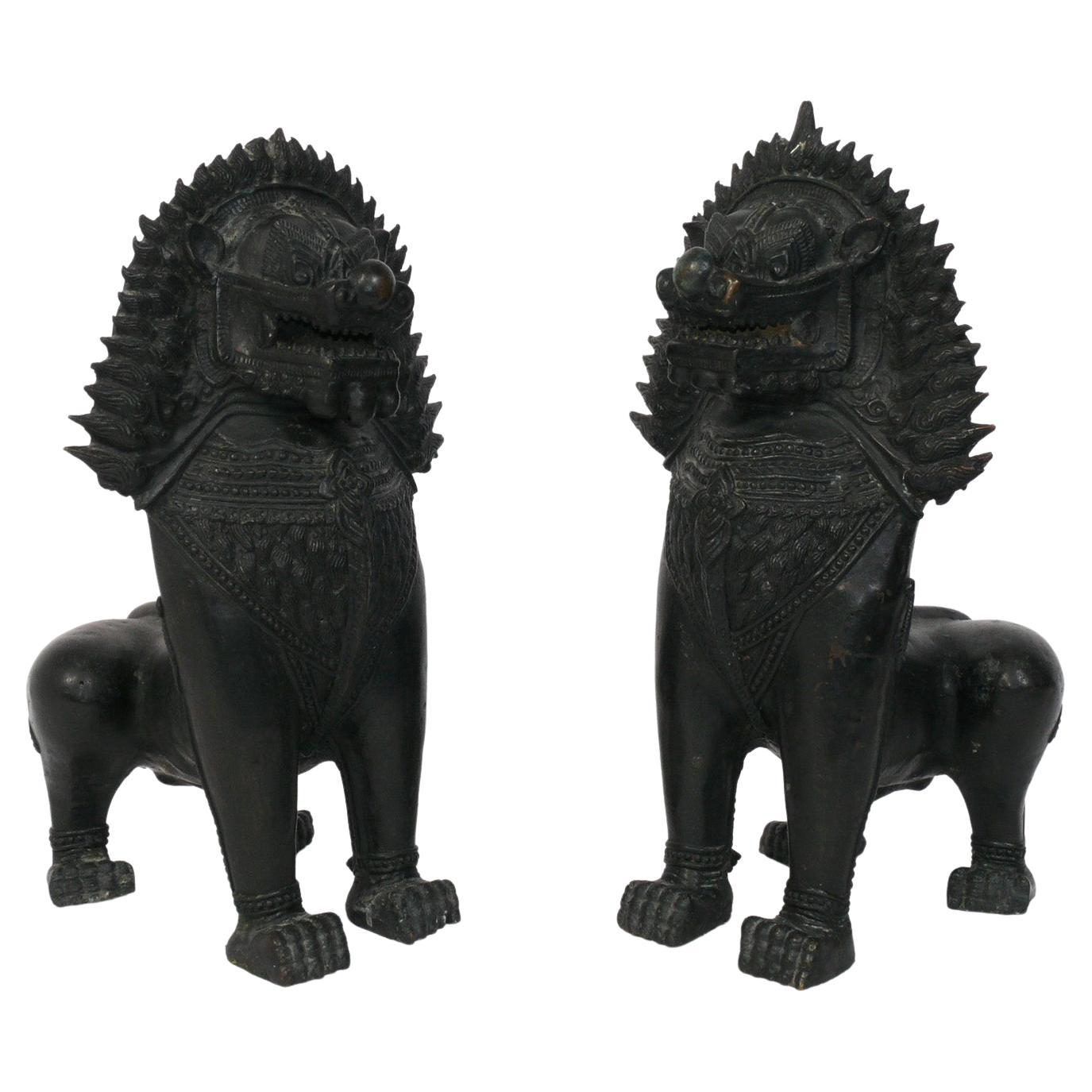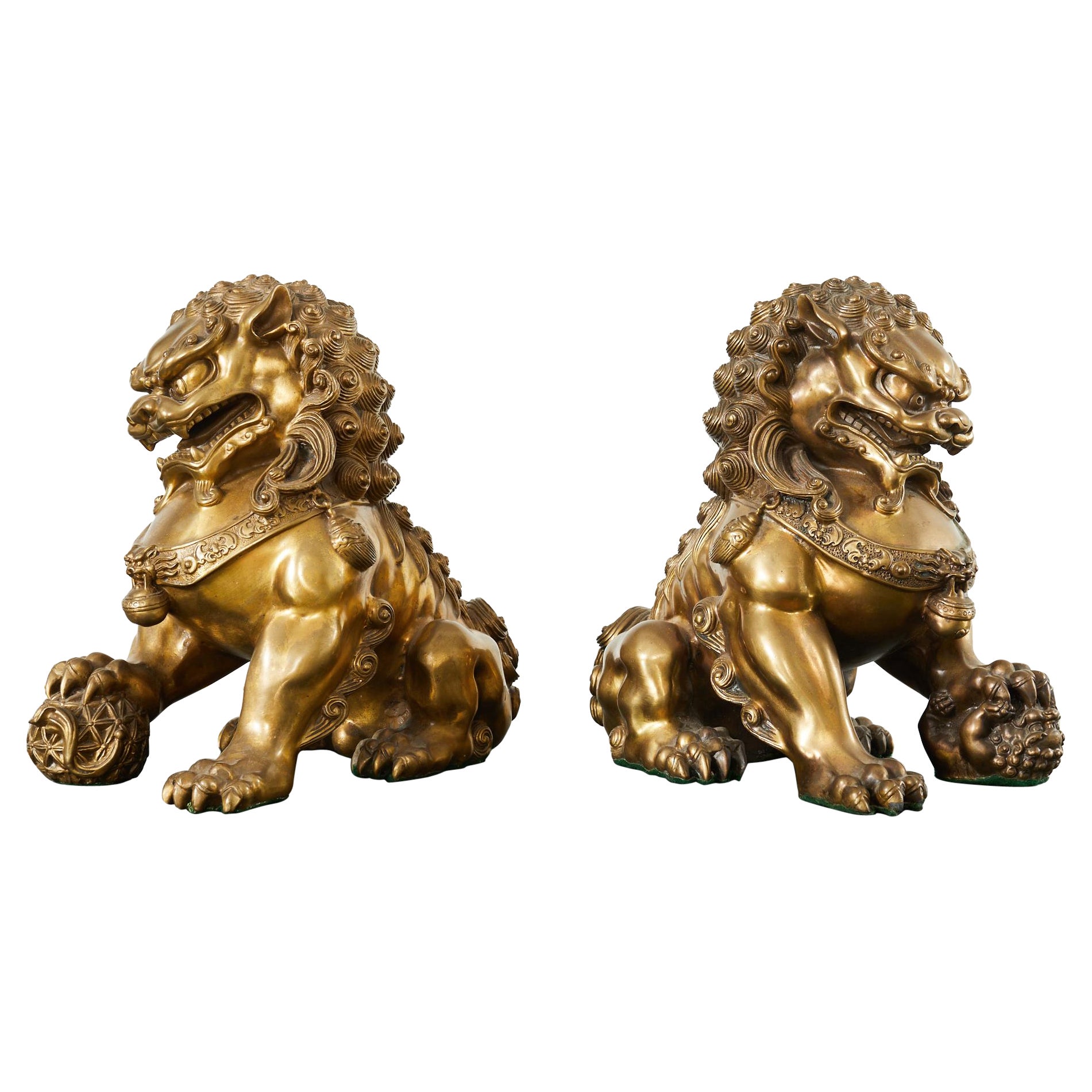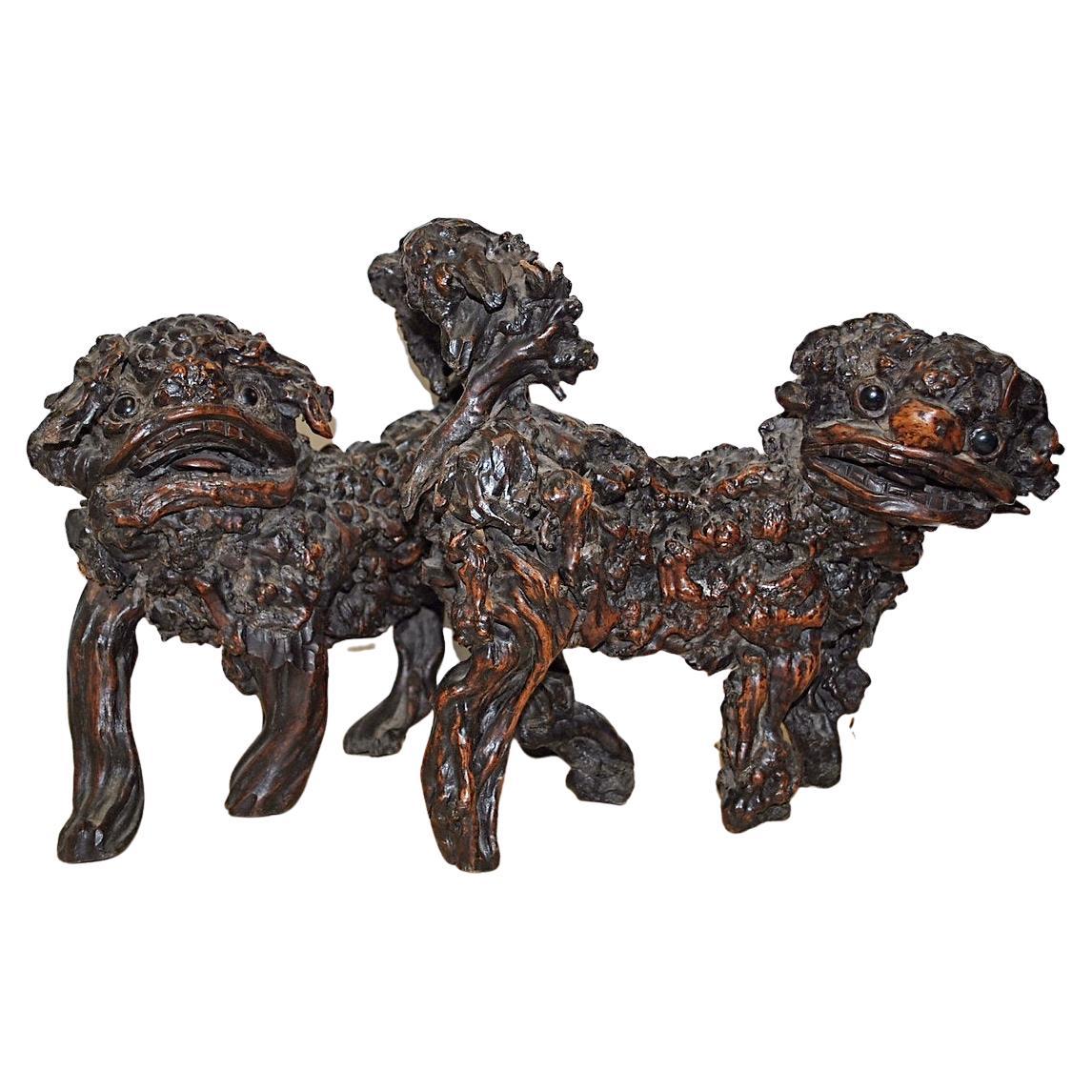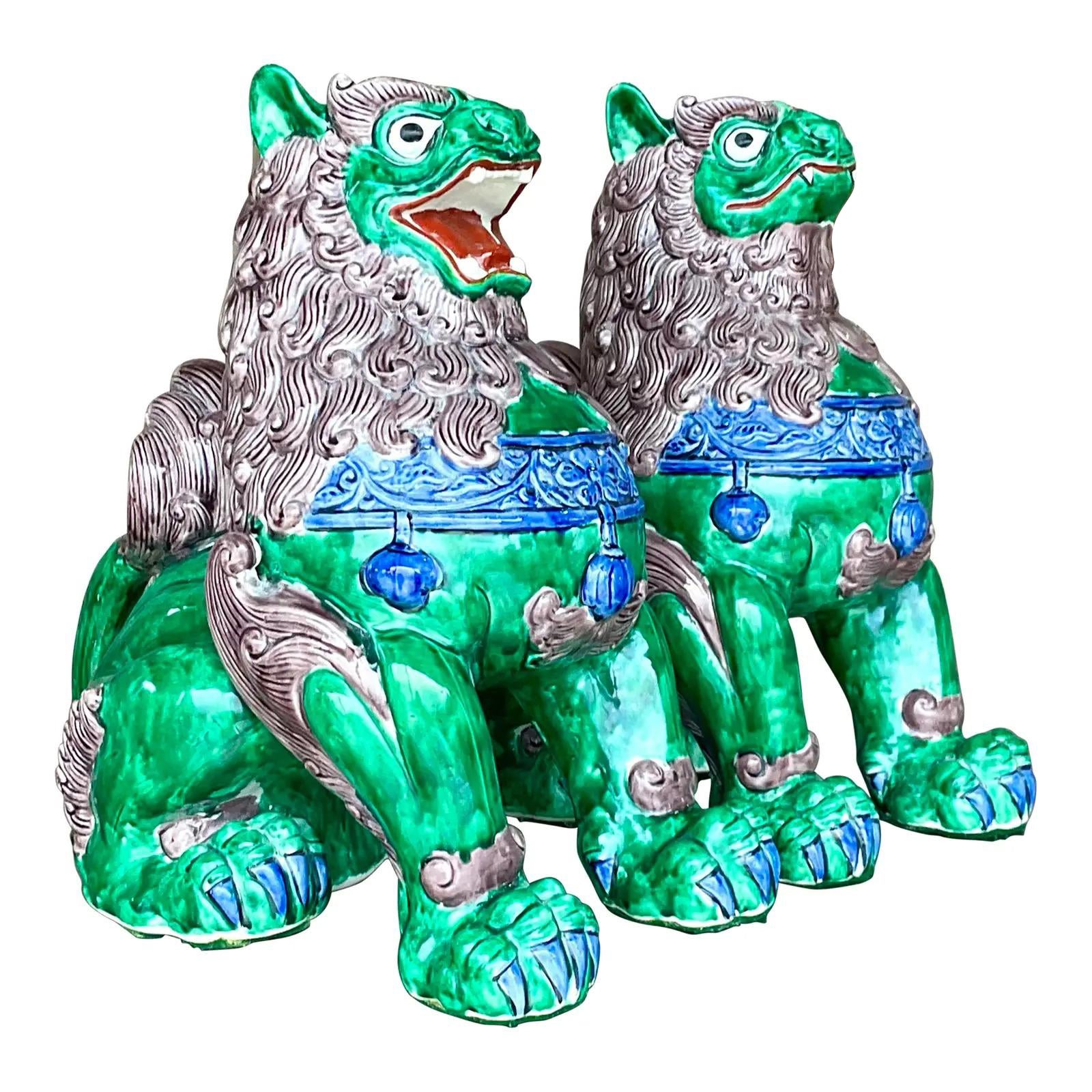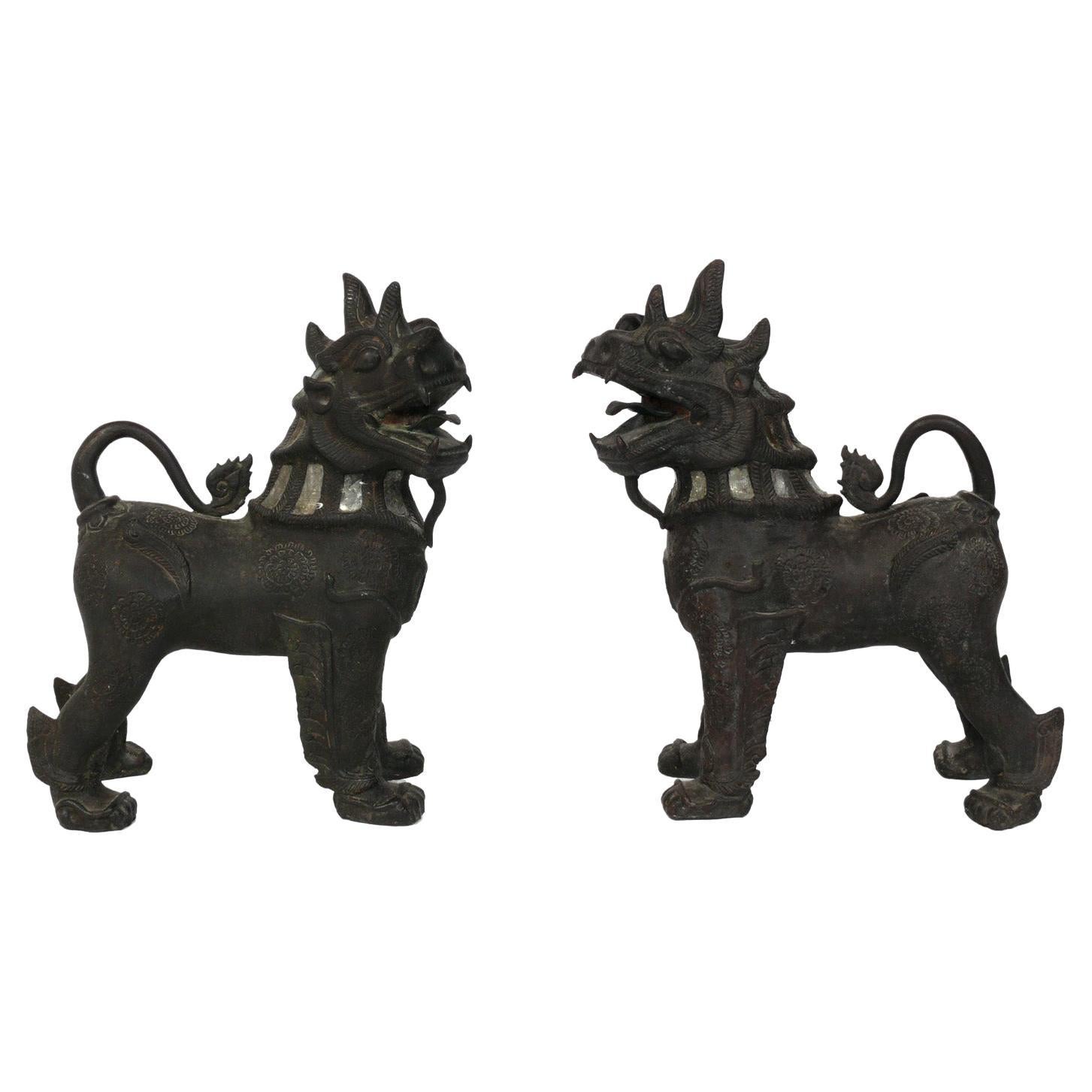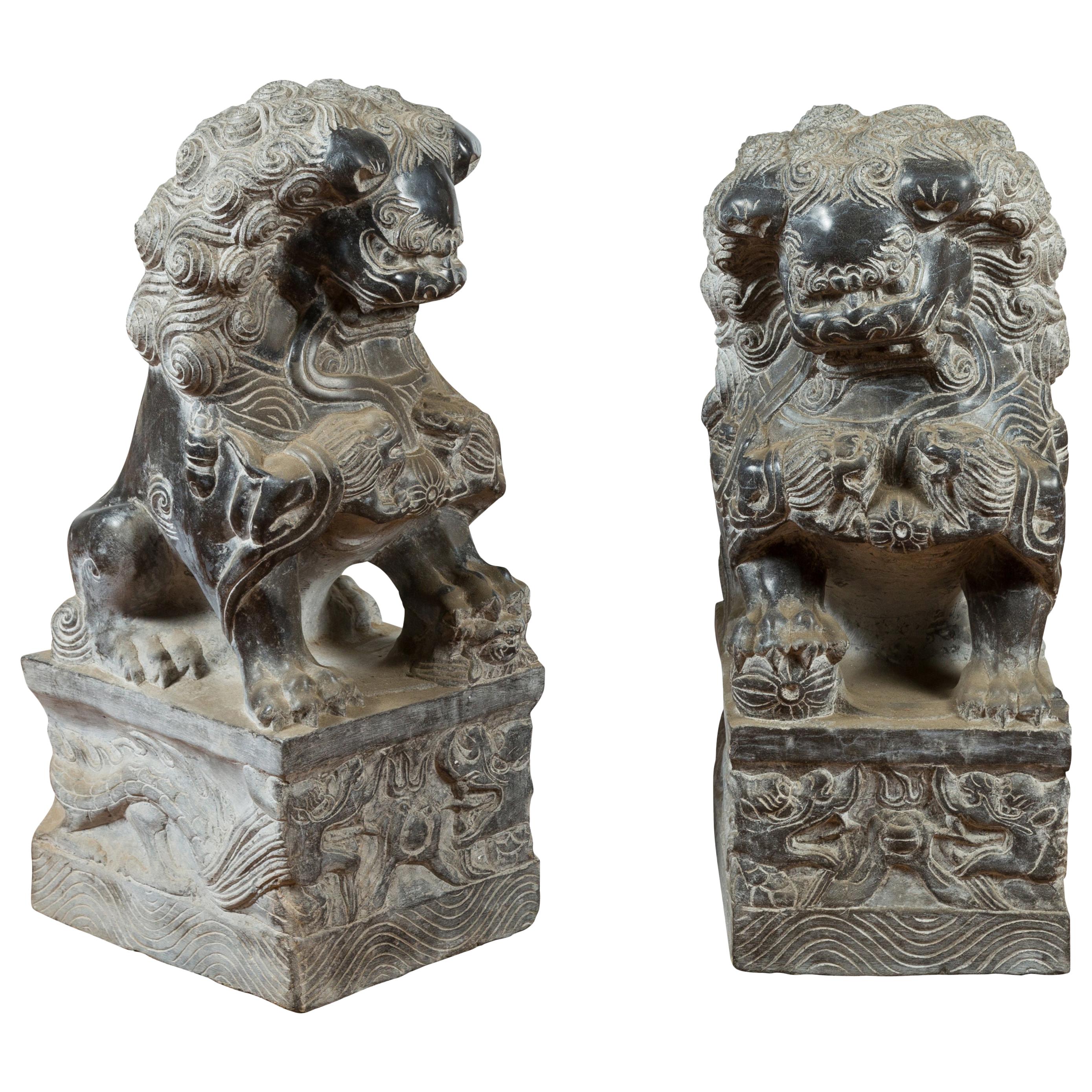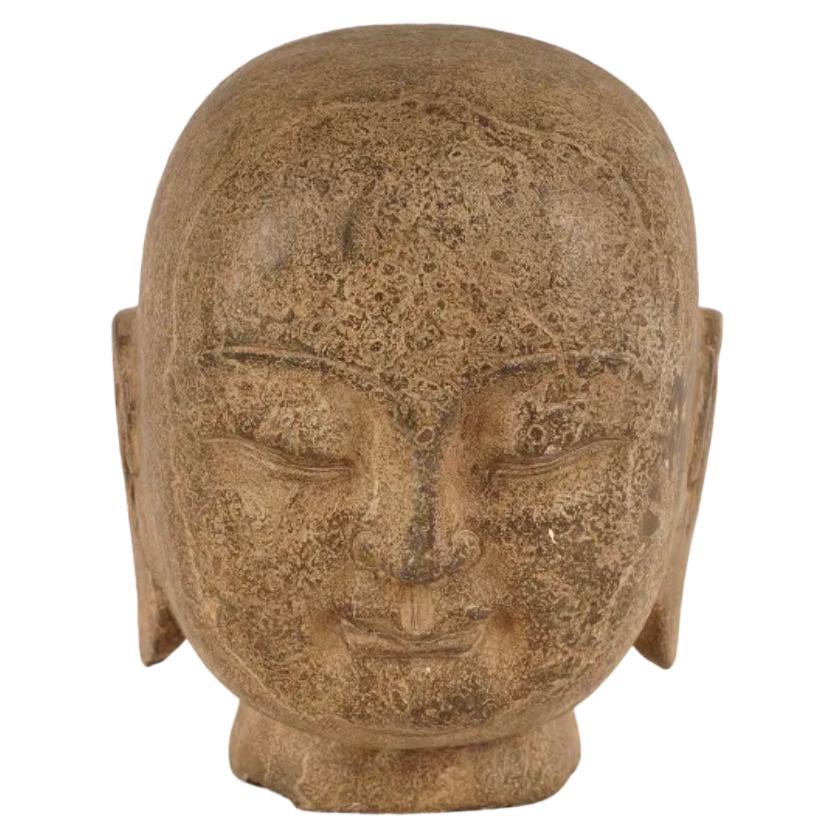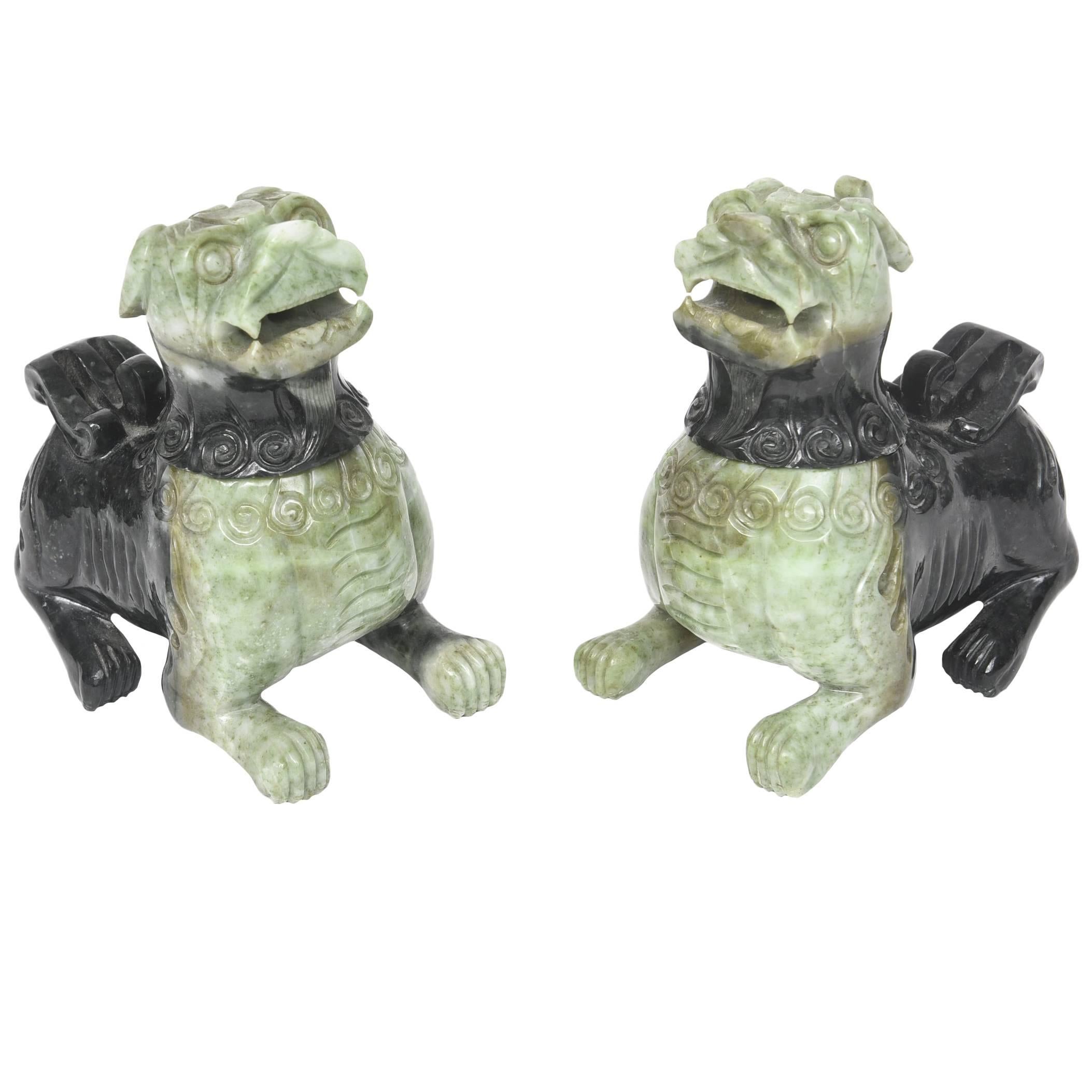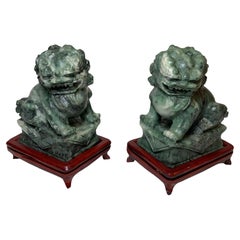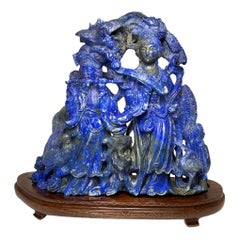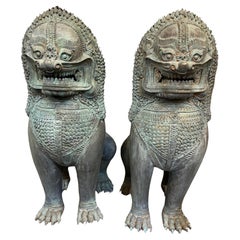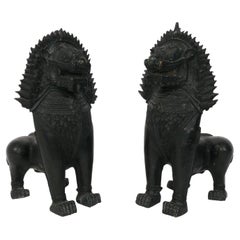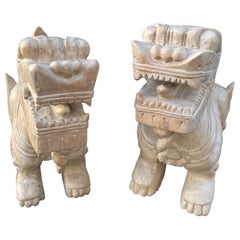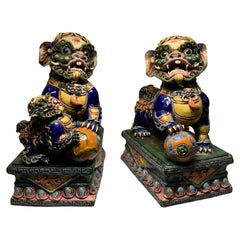
Pair of Large Lively Buddha’s Lions / Foo Dogs Ceramic Sculptures
View Similar Items
Want more images or videos?
Request additional images or videos from the seller
1 of 19
Pair of Large Lively Buddha’s Lions / Foo Dogs Ceramic Sculptures
About the Item
- Dimensions:Height: 18 in (45.72 cm)Width: 16 in (40.64 cm)Depth: 9 in (22.86 cm)
- Style:Chinese Export (In the Style Of)
- Materials and Techniques:
- Place of Origin:
- Period:
- Date of Manufacture:1900s
- Condition:Wear consistent with age and use. One of the dogs is missing one of the rings near neck.
- Seller Location:Guaynabo, PR
- Reference Number:1stDibs: LU5431224190102
About the Seller
5.0
Platinum Seller
These expertly vetted sellers are 1stDibs' most experienced sellers and are rated highest by our customers.
Established in 2011
1stDibs seller since 2020
286 sales on 1stDibs
Typical response time: 1 hour
More From This SellerView All
- Hand Carved Green Stone Small Chinese Foo-Dogs Sculptures/FigurinesLocated in Guaynabo, PRThis is a pair of hand carved green stone Chinese Foo-Dog sculptures/figurines. They depict a pair of foo-dogs seated in a rectangular shaped base with a carpet. They are supported b...Category
20th Century Chinese Chinese Export Sculptures and Carvings
MaterialsStone
$486 Sale Price / set30% Off - Chinese Gilt Patinated Bronze Small Sculpture of a LuohanLocated in Guaynabo, PRThis is a heavy patinated bronze sculpture of a Luohan. He is standing up in a gesture of reverence and/or prayer position with his eyes closed and dressed with a gilt robe. The bord...Category
Early 20th Century Chinese Chinese Export Sculptures and Carvings
MaterialsBronze
- Chinese Lapis Lazuli Carved Group of Figures SculptureLocated in Guaynabo, PRThis is a large heavy Chinese lapis lazuli well carved in details group of figures sculpture.`It depicts two young ladies very well dressed in southern and northern dynasty clothes with traditional Chinese hair...Category
Mid-20th Century Chinese Chinese Export Sculptures and Carvings
MaterialsLapis Lazuli
- Small Carved Lavender Opaline Jade Guan Yin SculptureLocated in Guaynabo, PRThis is a small carved lavender “opaline” jade Guan Yin sculpture. The sculpture has some russet jade spots in the upper back. The back of her head is adorned with a reticulated mand...Category
20th Century Chinese Chinese Export Figurative Sculptures
MaterialsJade
$712 Sale Price25% Off - Chinese Small Carved Dragons And Phoenix Jade PlaqueLocated in Guaynabo, PRThis is a Chinese small jade plaque. It depicts an almost square carved jade plaque with several dragons and phoenixes.Category
20th Century Chinese Chinese Export Sculptures and Carvings
MaterialsJade
- Chinese Hand Carved and Lacquered Gilt PanelLocated in Guaynabo, PRThis is a small rectangular hand carved and lacquered panel. It depicts a scene where a Chinese man is seated and holding a cup while a Chinese woman is observing from the top. The w...Category
Early 20th Century Chinese Chinese Export Sculptures and Carvings
MaterialsWood
You May Also Like
- Large Pair of Bronze Singha Temple Lions, Foo Dogs.Located in Stamford, CTA magnificent pair of bronze Singha Temple Lions, a Thai mythical creature in the form of a lion that has been a big part of Thai history guarding the entrances to the many Buddhist ...Category
Late 20th Century Thai Sculptures and Carvings
MaterialsBronze
$11,250 / set - Large Asian Bronze Foo DogsLocated in Atlanta, GAPair of Large Asian Bronze Foo Dogs or Kylin Dragon, probably Chinese, circa 1950s or earlier. They retain their warm original patina. These were purch...Category
Vintage 1950s Chinese Chinese Export Animal Sculptures
MaterialsBronze
$4,800 / set - Pair of Large Carved Wood Foo DogsLocated in West Palm Beach, FLPair of large & impressive carved Chinese foo dogs.Category
20th Century Chinese Sculptures and Carvings
MaterialsWood
$1,450 / set - Two Chinese Wood Lion Foo Dogs Incense HolderLocated in North Hollywood, CATwo Chinese wood Foo Dogs Incense holder burners. Featuring a pair of highly detailed lion foo dogs, one male and one female which were thought to protect the home from harmful spiritual influences and harmful people that might be a threat. The Foo Dogs...Category
Late 20th Century Chinese Chinese Export Sculptures and Carvings
MaterialsWood
- Pair of Chinese Bronzed Metal Buddhist Temple Foo Dogs LionsLocated in Rio Vista, CASpectacular pair of Chinese Buddhist guardian temple foo dogs or foo lions intricately crafted from bronzed metal. The lions are depicted sitting with one having a paw on a ball or o...Category
20th Century Chinese Qing Sculptures and Carvings
MaterialsMetal
- A pair of 19th Century carved Foo temple dogs or Chinese guardian LionsLocated in London, GBChinese guardian lions, or imperial guardian lions, are a traditional Chinese architectural ornament. Typically made of stone, they are also known as stone lions or shishi (石獅; shíshī). They are known in colloquial English as lion dogs or foo dogs / fu dogs. The concept, which originated and became popular in Chinese Buddhism, features a pair of highly stylized lions—often one male with a ball and one female with a cub—which were thought to protect the building from harmful spiritual influences and harmful people that might be a threat. Used in imperial Chinese palaces and tombs, the lions subsequently spread to other parts of Asia including Japan (see komainu), Korea, Philippines, Tibet, Thailand, Myanmar, Vietnam, Sri Lanka, Nepal, Cambodia, Laos, and Malaysia. There has been extensive interaction between Chinese mythology and Confucianism, Taoism, and Buddhism. Elements of pre-Han dynasty mythology such as those in Classic of Mountains and Seas were adapted into these belief systems as they developed (in the case of Taoism), or were assimilated into Chinese culture (in the case of Buddhism). Elements from the teachings and beliefs of these systems became incorporated into Chinese mythology. For example, the Taoist belief of a spiritual Paradise became incorporated into mythology as the place where immortals and deities used to dwell. Sometimes mythological and religious ideas have become widespread across China's many regions and diverse ethnic societies. In other cases, beliefs are more limited to certain social groups, for example, the veneration of white stones by the Qiang. One mythological theme that has a long history and many variations involves a shamanic world view, for example in the cases of Mongolian shamanism among the Mongols, Hmong shamanism among the Miao people, and the shamanic beliefs of the Qing dynasty from 1643 to 1912, derived from the Manchus. Politically, mythology was often used to legitimize the dynasties of China, with the founding house of a dynasty claiming a divine descent. Mythology and philosophy. Further information: Chinese philosophy True mythology is distinguished from philosophical treatises and theories. Elaborations on the Wu Xing are not really part of mythology, although belief in five elements could appear. The Hundred Schools of Thought is a phrase suggesting the diversity of philosophical thought that developed during the Warring States of China. Then, and subsequently, philosophical movements had a complicated relationship with mythology. However, as far as they influence or are influenced by mythology, divides the philosophical camps into two rough halves, a Liberal group and a Conservative group. The liberal group being associated with the idea of individuality and change, for example as seen in the mythology of divination in China, such as the mythology of the dragon horse that delivered the eight bagua diagrams to Fu Xi, and methods of individual empowerment as seen in the Yi Jing (Book of Changes). The Liberal tendency is towards individual freedom, Daoism, and Nature. The relationship of the Conservative philosophies to mythology is seen in the legendary Nine Tripod Cauldrons, mythology about the emperors and central bureaucratic governance, Confucianism, written histories, ceremonial observances, subordination of the individual to the social groups of family and state, and a fixation on stability and enduring institutions. The distinction between the Liberal and Conservative is very general, but important in Chinese thought. Contradictions can be found in the details, however these are often traditional, such as the embrace by Confucius of the philosophical aspects of the Yi Jing, and the back-and-forth about the Mandate of Heaven wherein one dynasty ends and another begins based according to accounts (some of heavily mythological) where the Way of Heaven results in change, but then a new ethical stable dynasty becomes established. Examples of this include the stories of Yi Yin, Tang of Shang and Jie of Xia or the similar fantastic stories around Duke of Zhou and King Zhou of Shang. Mythology exists in relationship with other aspects of society and culture, such as ritual. Various rituals are explained by mythology. For example, the ritual burning of mortuary banknotes (Hell Money), lighting fireworks, and so on. A good example of the relationship of Chinese mythology and ritual is the Yubu, also known as the Steps or Paces of Yu. During the course of his activities in controlling the Great Flood, Yu was supposed to have so fatigued himself that he lost all the hair from his legs and developed a serious limp. Daoist practitioners sometimes incorporate a curiously choreographed pedal locomotion into various rituals. Mythology and practice, one explains the other: in these rituals, the sacred time of Yu merges with the sacral practice of the present. Various ideas about the nature of the earth, the universe, and their relationship to each other have historically existed as either a background or a focus of mythologies. One typical view is of a square earth separated from a round sky by sky pillars (mountains, trees, or undefined). Above the sky is the realm of Heaven, often viewed of as a vast area, with many inhabitants. Often the heavenly inhabitants are thought to be of an "as above so below" nature, their lives and social arrangements being parallel to those on earth, with a hierarchical government run by a supreme emperor, many palaces and lesser dwellings, a vast bureaucracy of many functions, clerks, guards, and servants. Below was a vast under ground land, also known as Diyu, Yellow Springs, Hell, and other terms. As time progressed, the idea of an underground land in which the souls of the departed were punished for their misdeeds during life became explicit, related to developments in Daoism and Buddhism. The underground world also came to be conceived of as inhabited by a vast bureaucracy, with kings, judges, torturers, conductors of souls, minor bureaucrats, recording secretaries, similar to the structure of society in the Middle Kingdom (earthly China). Chinese temple Dogs...Category
Antique 1860s Chinese Chinese Export Sculptures and Carvings
MaterialsHardwood

